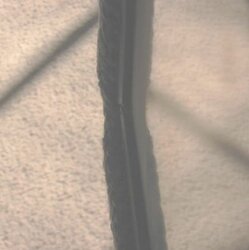First observations/question/thought- I've had a stove with a gasket that started showing a couple light gaps (top rt corner vicinity by the handle and another about mid way down the same side). I really haven't noticed a difference other than perhaps shutting down the air a little lower than I did with a perfect gasket. It appears that closing down the air a little more is simply offset by the little bit of air that's coming in from the gasket area. Sound plausible?
Second question/thought- Why do people replace the whole gasket at once? If there's only one main area (usually near the door handle from what I've seen) why not simply replace that area with a foot of rope as opposed to pulling out the hole thing? A few closings of the door will squish the new rope to match the old so it seems like a waste of time/rope to replace some that's perfectly fine.
I know somebody's ready to slam these observations/thoughts but maybe not?
Second question/thought- Why do people replace the whole gasket at once? If there's only one main area (usually near the door handle from what I've seen) why not simply replace that area with a foot of rope as opposed to pulling out the hole thing? A few closings of the door will squish the new rope to match the old so it seems like a waste of time/rope to replace some that's perfectly fine.
I know somebody's ready to slam these observations/thoughts but maybe not?


 Why do people replace the whole gasket at once?
Why do people replace the whole gasket at once? 
